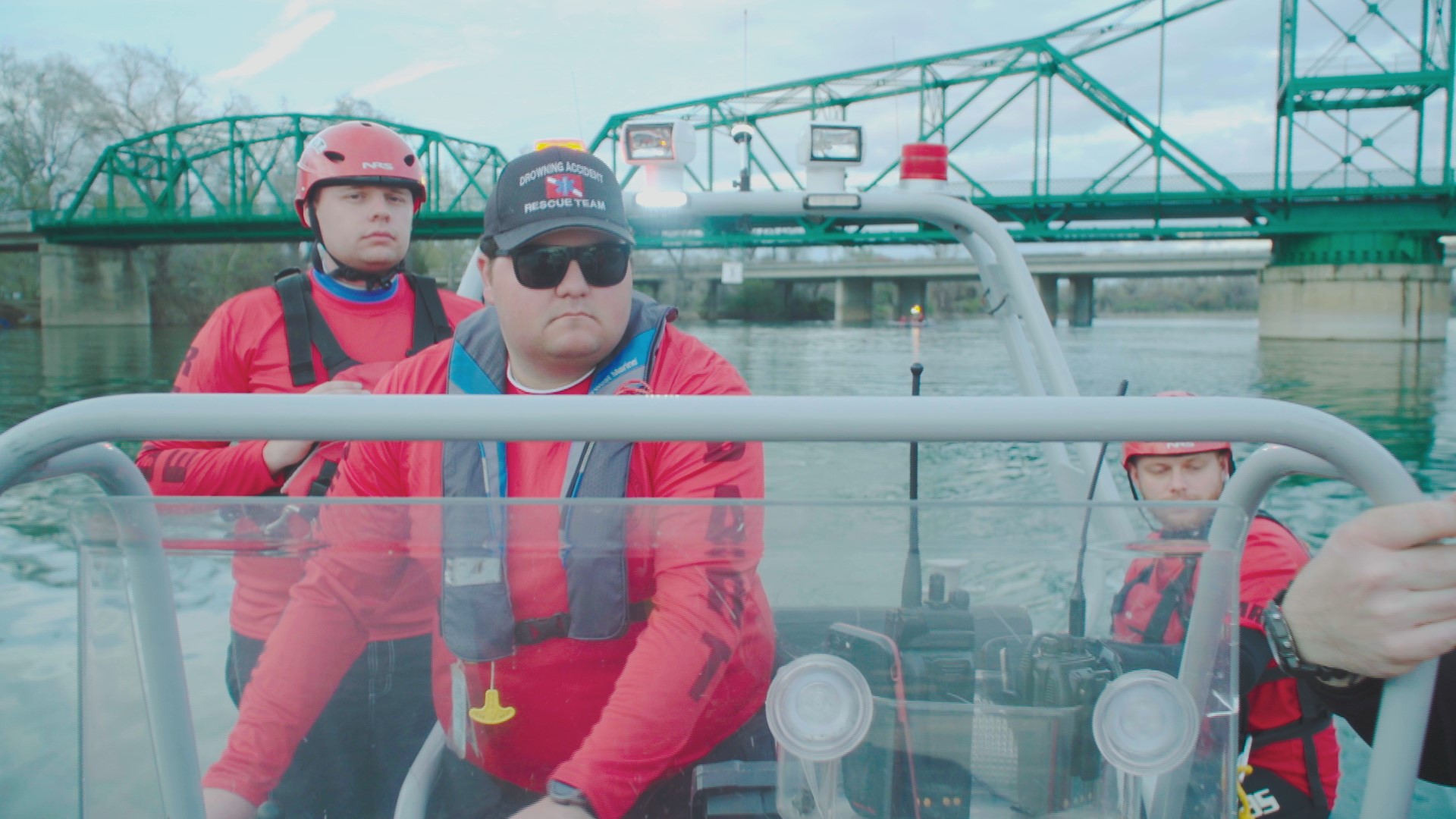SACRAMENTO, Calif. — Rivers in the area have come out of a wet season and many are running at fast speeds and high-water levels.
Even if the water looks calm, those rivers can be extremely dangerous.
“The rivers are higher. They’re faster and they’re colder than normal,” said Sacramento County Regional Parks spokesperson Ken Casparis.
“If people are going to be out there, just be aware of those three things,” he added.
What exactly makes a body of water dangerous?
1. Difference in river speed from the top to bottom
Without an actual measurement, there is no way to tell how fast water is moving under the surface of the river.
“It looks calm on the surface but just underneath… it’s flowing very rapidly,” said Casparis.
That speed can pose conditions that will stop even rescue and dive teams from continuing their searches.
This is one of the challenges that the Sacramento County Sheriff’s Department faced in their search for a man who fell into the San Joaquin River. It was moving three to five knots on the surface but seven to nine knots below the surface.
2. Cold temperatures are a concern, even for divers
Water temperatures for some rivers can be freezing due to snowmelt, even rescue divers in the right gear can struggle with 50-degree water.
That temperature can prevent divers from staying down in the river for a significant amount of time.
A sudden immersion in cold water can stimulate a gasp reflex and cause an involuntary inhalation of air or water, trigger cardiac arrest, temporary paralysis, hypothermia, and drowning. It takes less than 1/2 cup of water in a person's lungs to drown.
Cold water in the ear canal can cause vertigo and disorientation, according to the California Division of Boating and Waterways. Body heat can also reduce 25 to 30 times faster in cold water as compared to air.
3. Underwater risks
Flows aren't the only issue in a river. The rising river levels can cover up objects that cause dangerous river conditions.
Risk can include getting caught below the surface of the water, especially when rivers rise in the spring and early summer due to snowmelt. Debris, trees, and rocks can also translate to bad conditions for waders, swimmers, paddlers, boaters, anglers, and hikers near the water.
Even visibility can be impacted. According to Sacramento County Sheriff’s spokesperson Shaun Hampton, the San Joaquin River conditions that presented challenges to divers included visibility issues. In terms of visibility, he said that the river conditions were such that people weren't able to see their hand in front of their face.
4. No two rivers have the same features
With rivers, you might see a unit of measurement called cubic feet per second [cfs]. You might hear about one river flowing at 5,000 cfs and another flowing at 8,000 cfs, but these measurements will not tell you about the speed of that river.
"Any river can be dangerous at any rate of flow," said Constance Anderson, spokesperson for Turlock Irrigation District, which tends the Tuolumne River.
Depending on the river, that flow could be moving fast if it's in a narrow channel and slow if it is in a wider channel.
"Caution should always be used when in or around rivers and reservoirs," Anderson continued. "No two rivers have the same features, and no two sections of one river are identical either—flow rates that may seem relatively safe on one section of a river may not be safe at all on another river or on another section of the same river."
Rivers can be dangerous, so what can you do?
"The wet season has left many popular river access points underwater," said Sacramento County Regional Parks Director Liz Bellas in a statement to ABC10. "Individuals who decide to hit the river early this season are advised to use caution as the river is flowing high, fast and cold."
To stay safe she suggested the following:
- Wear a life jacket, even if you're a strong swimmer
- Stay out of deep water
- Watch out for underwater hazards
- Obey posted signs
- Never jump off bridges or use rope swings
- Watch out of signs of hypothermia
- Keep an eye on children
- Avoid getting too tired
- Remember that alcohol, drugs, and water don't mix
In regard to life jackets, there are 11 locations along the Sacramento region participating in a Life Jacket Loan program. Participating in the program is as easy going to a park's access point, picking one up, and returning when you're done.
You can also visit a local fire station to get a life jacket as well.
For a full list of areas in your county that have a life jacket program, click HERE.
________________________________________________________________
The Drowning Accident Rescue Team (DART) says the number of drownings has gone down significantly through educating people on how to be safe when their on the water.

